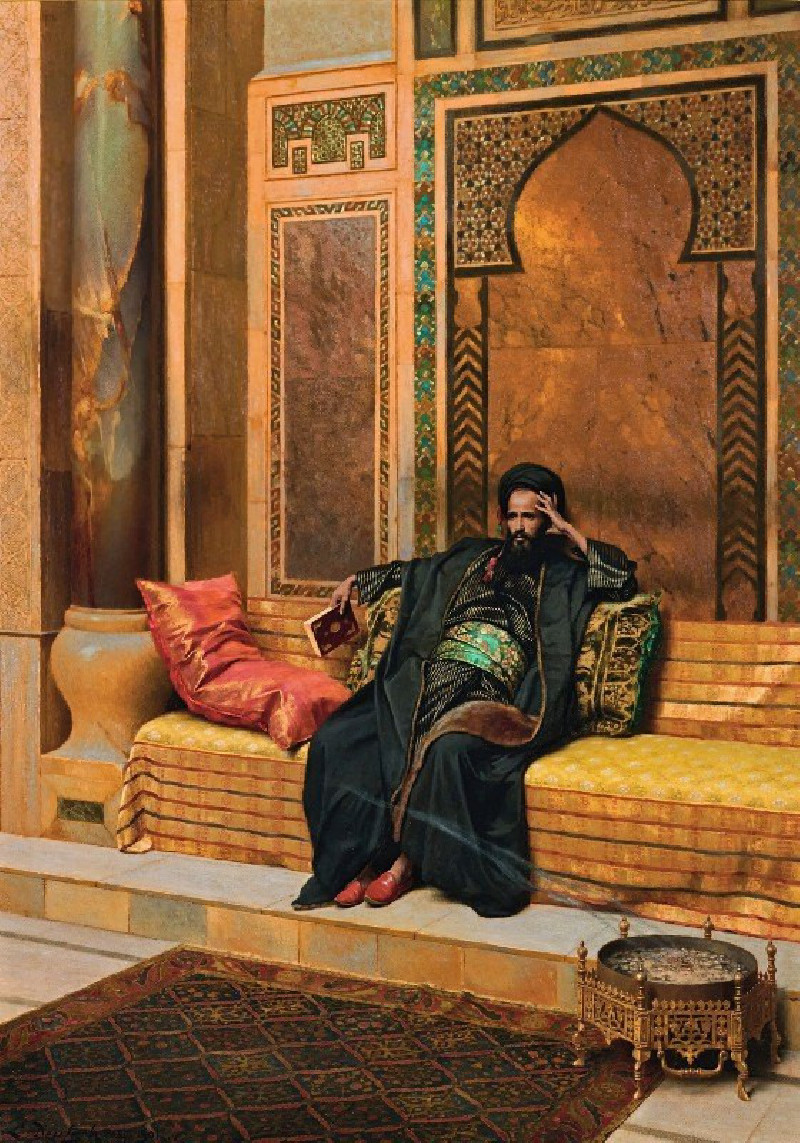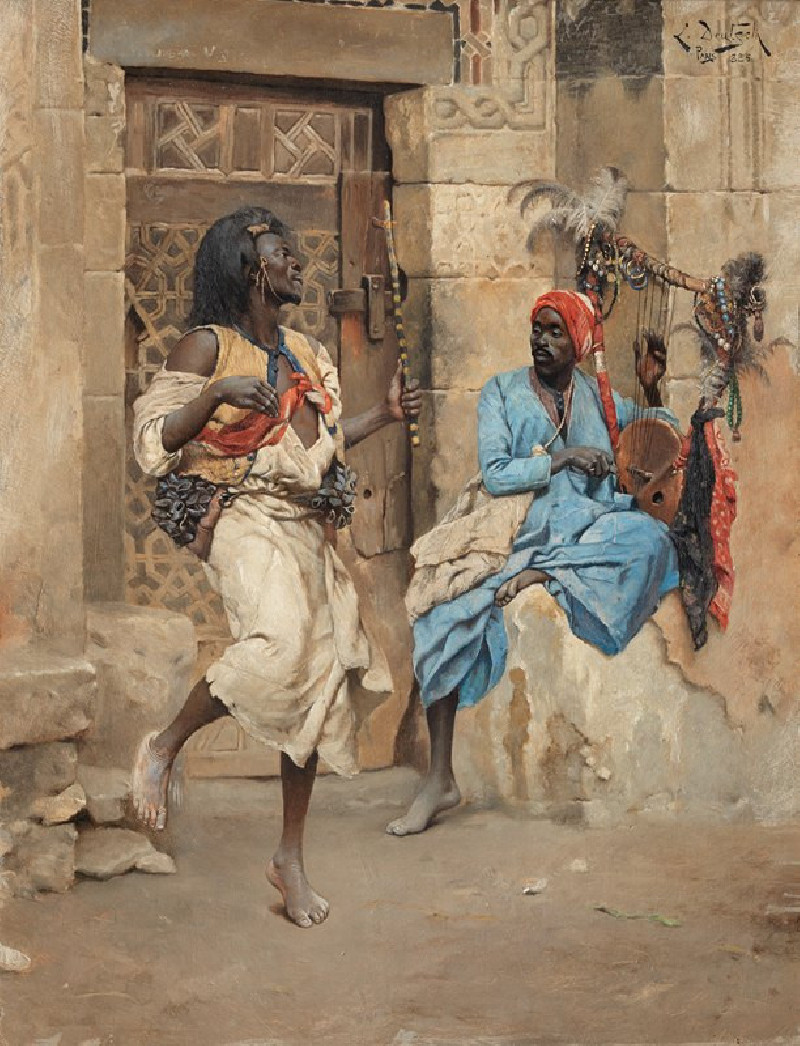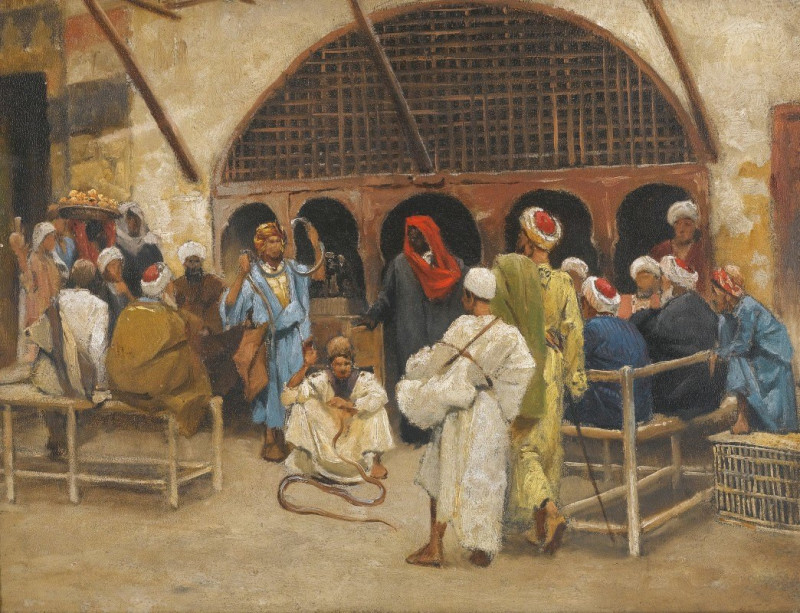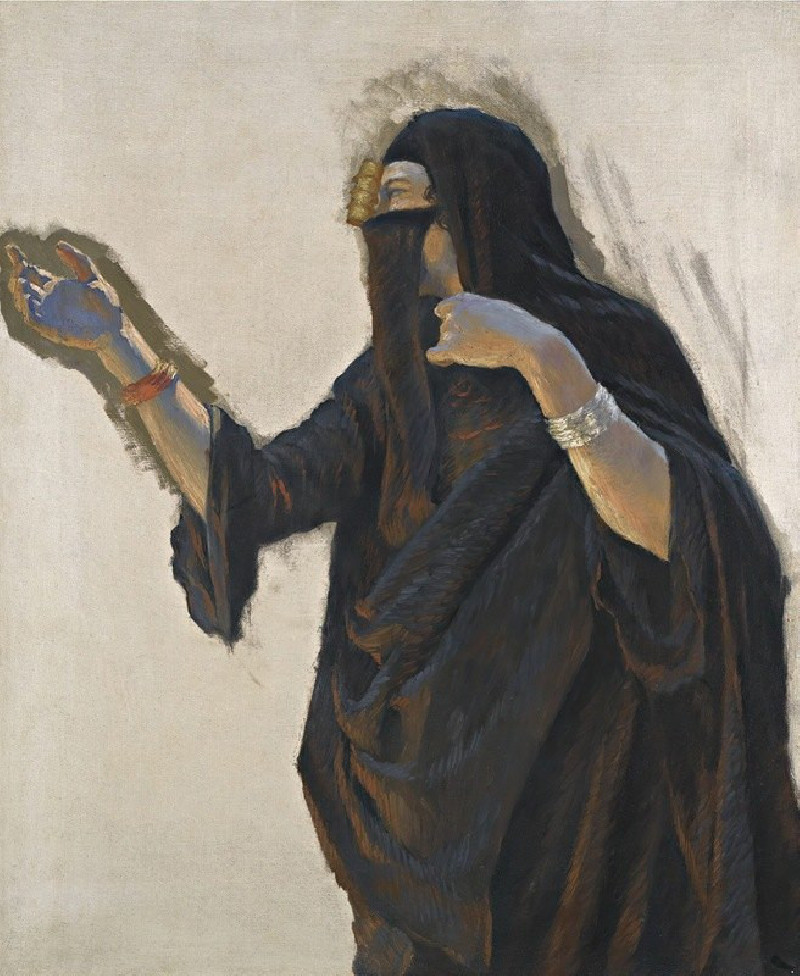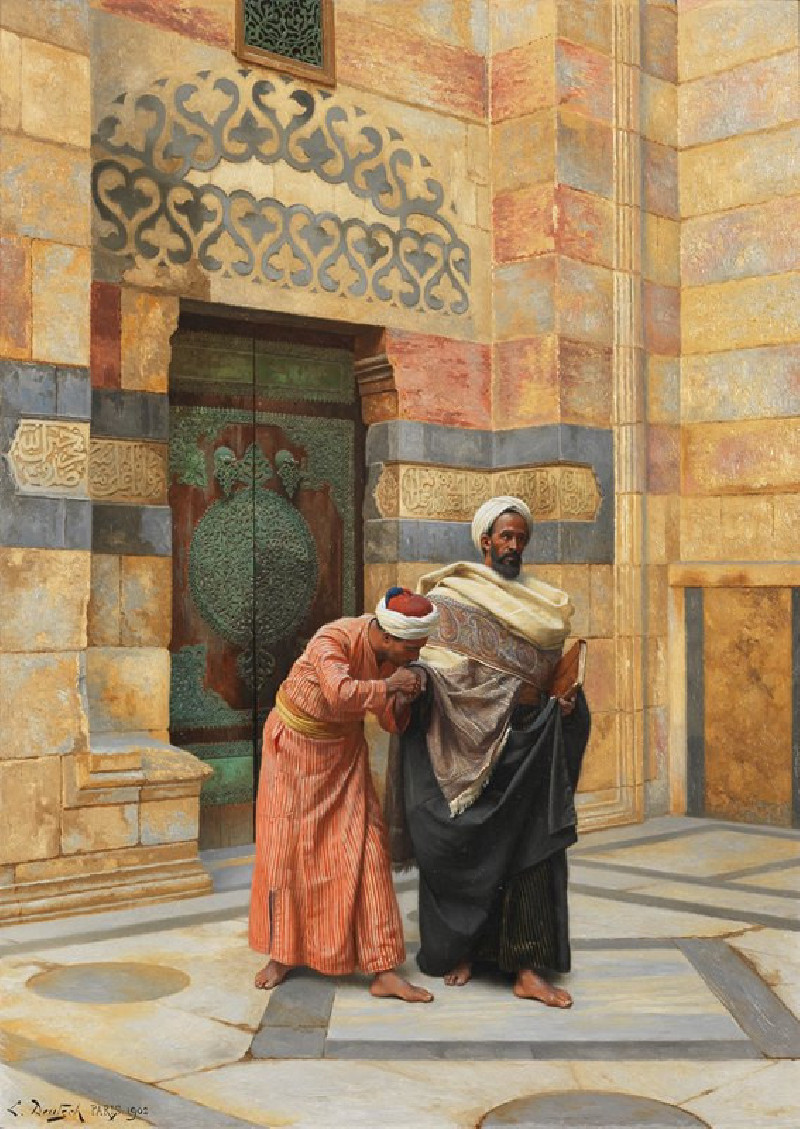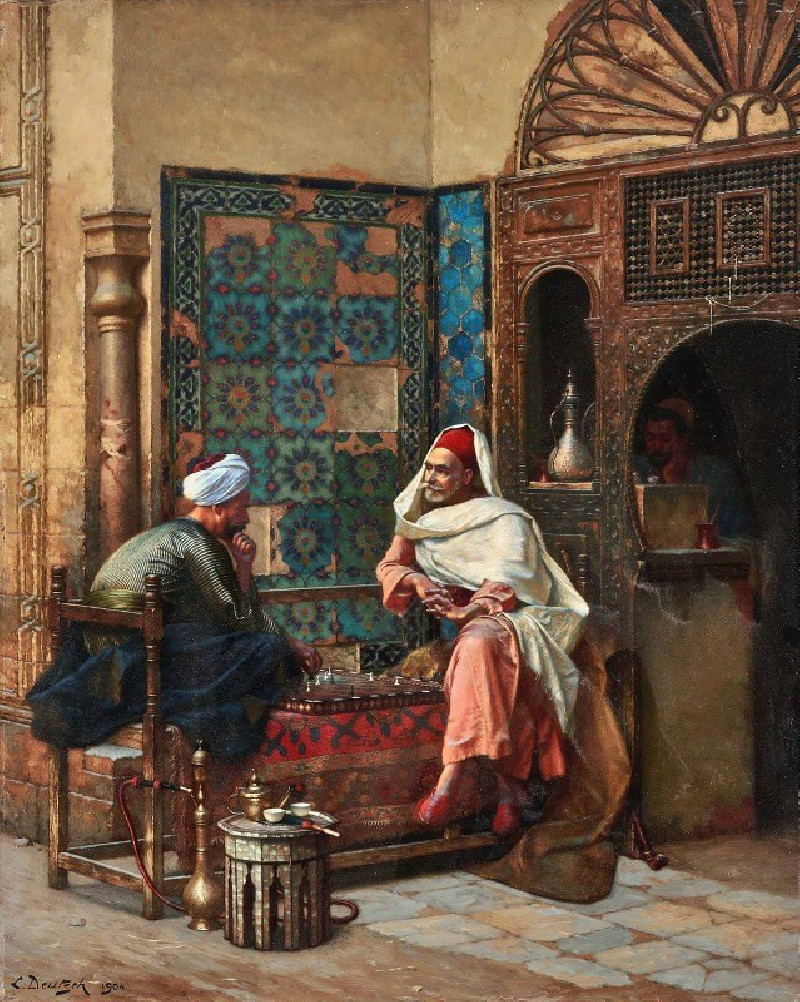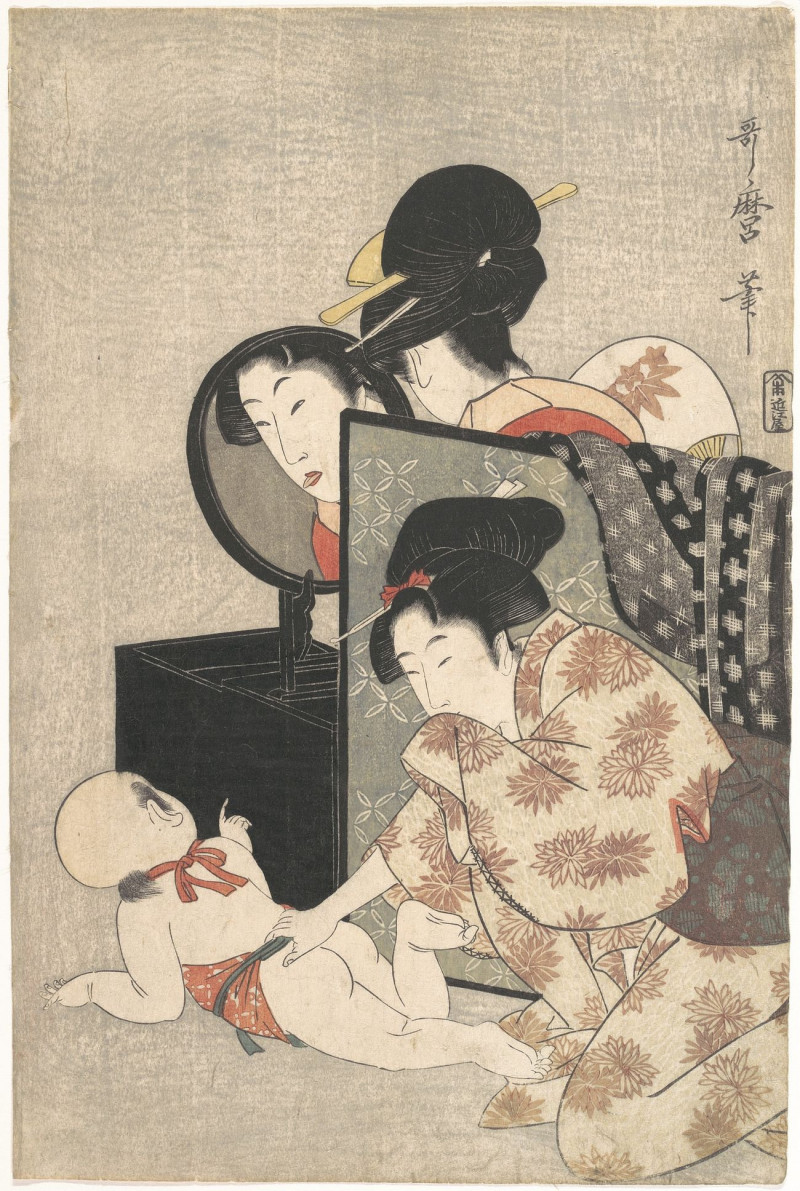The Water Seller (1891)
Technique: Giclée quality print
Recommended by our customers
More about this artwork
Dive into the vivid narrative of daily life captured in Ludwig Deutsch's remarkable painting, "The Water Seller" from 1891. This artwork offers a fascinating glimpse into the streetscapes and occupations of North Africa during the late 19th century.The painting precisely portrays a moment in the life of a water seller, a common yet crucial profession in the arid regions portrayed. Dressed in a traditional vibrant attire, the water seller stands dignified with a loaded brass water vessel resting on his shoulder, suggesting the weight of his everyday responsibilities. His outfit is rich in color, with a red sash and a multi-colored waistcoat, which strikingly contrasts against the warm, earthy tones of the architecture around him.Beside him, a seated figure, likely a customer or a fellow vendor, takes a drink from a small cup, showing the water seller's role in providing this essential resource. This character, clad in more subdued hues, creates an engaging contrast both visually and contextually with the water seller.The backdrop signifies exquisite architectural details—a blend of ornate wood and stonework that evokes the historical depth of the setting. The faded walls and worn stones tell a story of time, setting an authentic stage for the subjects.In "The Water Seller," Deutsch employs his mastery of texture and light to highlight life's ordinary yet compelling moments, weaving a scene that merges cultural story-telling with exuberant aesthetic details.
Delivery
Returns
Ludwig Deutsch was an Austrian painter who settled in Paris and became a noted Orientalist artist.
Details of Ludwig Deutsch's life are obscure. He was born in Vienna in 1855 into a well-established Jewish family. His father Ignaz Deutsch was a financier at the Austrian court. He studied at the Vienna Academy of Fine Arts 1872–1875, then, in 1878, moved to Paris where he became strongly associated with Orientalism.








